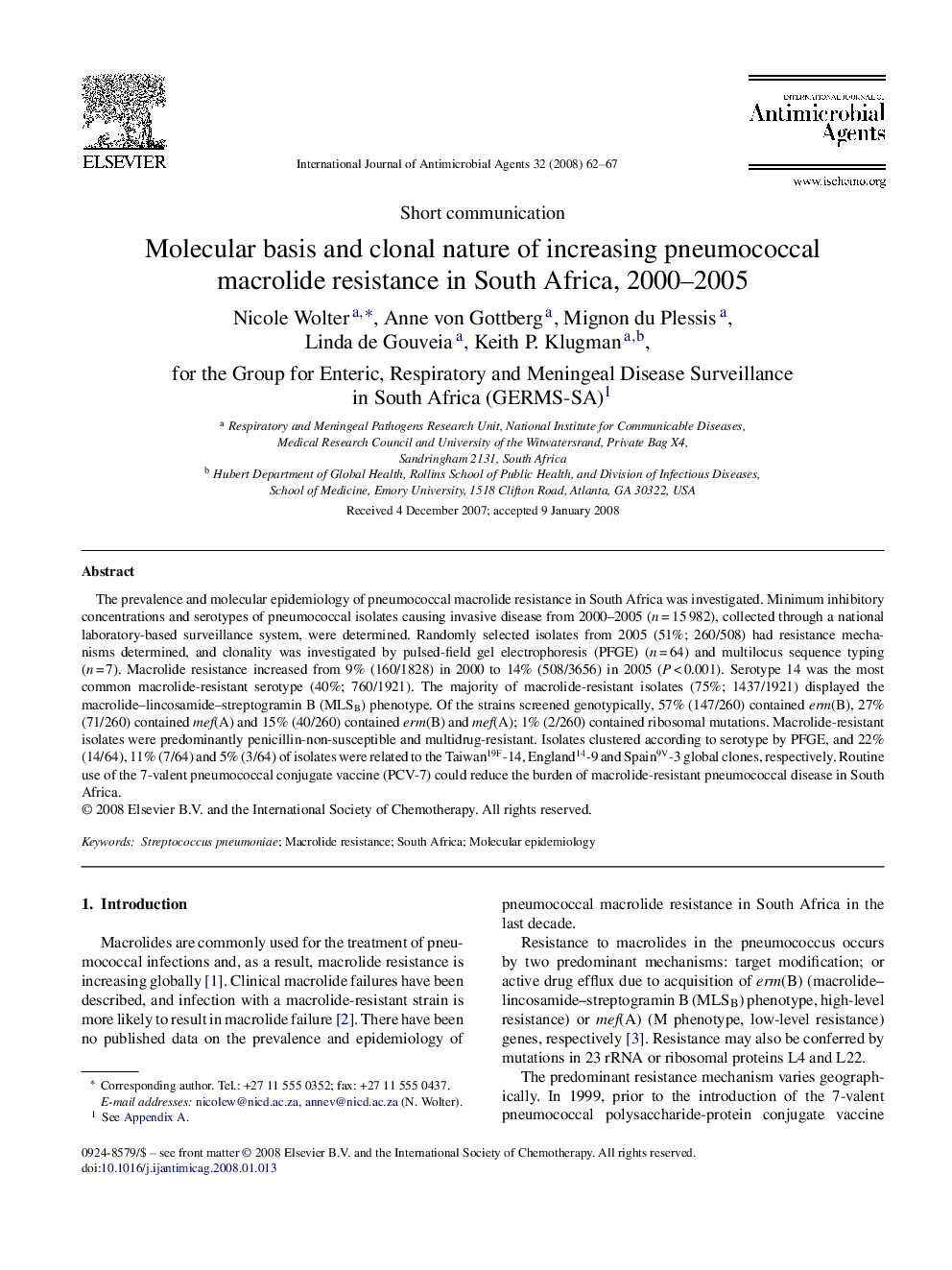| Article ID | Journal | Published Year | Pages | File Type |
|---|---|---|---|---|
| 3360442 | International Journal of Antimicrobial Agents | 2008 | 6 Pages |
The prevalence and molecular epidemiology of pneumococcal macrolide resistance in South Africa was investigated. Minimum inhibitory concentrations and serotypes of pneumococcal isolates causing invasive disease from 2000–2005 (n = 15 982), collected through a national laboratory-based surveillance system, were determined. Randomly selected isolates from 2005 (51%; 260/508) had resistance mechanisms determined, and clonality was investigated by pulsed-field gel electrophoresis (PFGE) (n = 64) and multilocus sequence typing (n = 7). Macrolide resistance increased from 9% (160/1828) in 2000 to 14% (508/3656) in 2005 (P < 0.001). Serotype 14 was the most common macrolide-resistant serotype (40%; 760/1921). The majority of macrolide-resistant isolates (75%; 1437/1921) displayed the macrolide–lincosamide–streptogramin B (MLSB) phenotype. Of the strains screened genotypically, 57% (147/260) contained erm(B), 27% (71/260) contained mef(A) and 15% (40/260) contained erm(B) and mef(A); 1% (2/260) contained ribosomal mutations. Macrolide-resistant isolates were predominantly penicillin-non-susceptible and multidrug-resistant. Isolates clustered according to serotype by PFGE, and 22% (14/64), 11% (7/64) and 5% (3/64) of isolates were related to the Taiwan19F-14, England14-9 and Spain9V-3 global clones, respectively. Routine use of the 7-valent pneumococcal conjugate vaccine (PCV-7) could reduce the burden of macrolide-resistant pneumococcal disease in South Africa.
